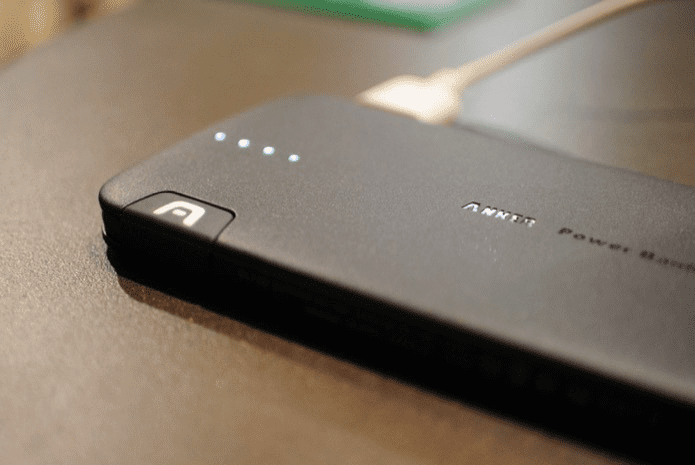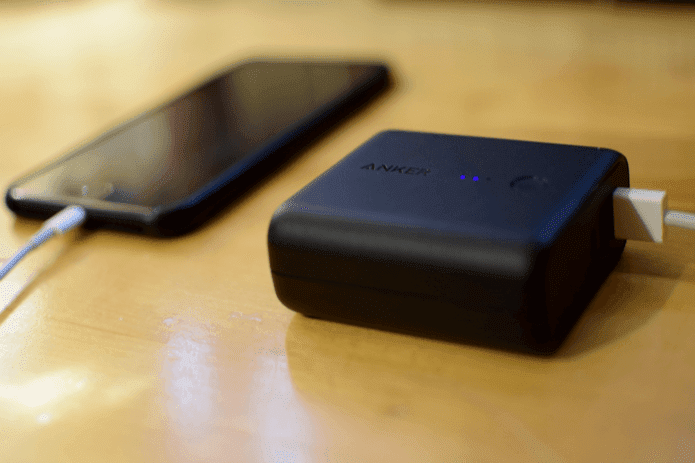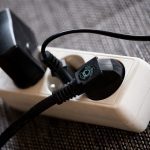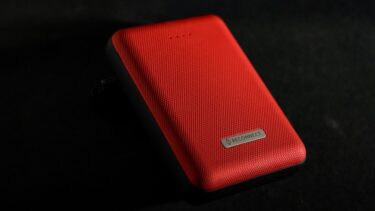If you use a power bank sparingly, you wouldn’t want to lug a huge brick around. And the opposite is also true. If you are often on the road, a small power bank won’t do any good. Hence, you must pick the right size of the power bank. Besides that, you should also calculate the number of devices you need to charge and the charging speed. So, if you are planning to buy a power bank for your tablet or smartphone, this guide will help you pick the right size power bank for you. Let’s get started.
1. Number of Devices
First things first, how many devices do you plan to charge on your power bank daily? Is it just your smartphone? Or, do you plan to fuel your headphones and tablet? If you plan to refuel your wireless headphones/earphones or your watch, you are in the safe. This is because these devices do not eat much of the stored energy compared to other power-hungry devices like tablets and laptops (yes, some laptops charge via power banks and vice versa). For instance, wireless earphones like the Apple AirPods Pro have a mere 45.4 mAh battery. And smartwatches like the Samsung Galaxy Watch 4 have 361 mAh batteries compared to the whopping 5,000 mAh of the Galaxy S21 Ultra. The bottom line is that the number of devices and the type of devices also play a crucial role in buying the right power bank.
2. Battery Capacity of Your Primary Device
Now, coming to the most important part—what should be the battery capacity of your power bank? As noted earlier, the math is simple. A small power bank should be enough to provide around a single round and half of the charge cycles for a phone on a good day. When we say small, we mean around 4,500 mAh – 5,000 mAh power bank. These are small devices and should be good enough to charge a budget smartphone fully. For example, if you have the Google Pixel 4a, the Miady 5,000 mAh Mini Portable Charger should be good to act as a backup. However, if you have a smartphone with a large battery, it is but natural that you should opt for a heavy-duty power bank. However, it’s not as simple as buying a 5,000 mAh power bank to charge a 5,000 mAh smartphone. Life should be that simple, no? You’ll have to consider the conversion ratio. When it comes to smartphones, the power rating is calculated at 5 volts. But, in the case of power banks, the power rating is calculated at 3.7 volts. This is because they carry Li-ion (Lithium-Ion) battery cells. And naturally, this difference causes a step down in the charge cycles. Thankfully, there’s an easy way to calculate the actual power of each device as per its capacity. Here, let’s take the example of the 5,000 mAh power bank. Total energy of the power bank is 5,000 mAh x 3.7V = 18,500 mWh. Converting back to 5V, the capacity is 18,500 mWH / 5V = 3,700 mAh. Hence, a 5,000 mAh power bank will be able to yield around 3,700mAh power. So, you’ll have to decide accordingly. If you want to charge a 5,000 mAh phone via power bank fully, you’ll have to buy one that has over the said amount of power. At the same time, you’ll need to consider other things like the number of charges it can hold. For example, if you want to charge your Moto G100 several times over, you can consider a 20,000 mAh power backup such as the Anker PowerCore. To put that in perspective, a 20,000 mAh can charge the Moto G100 or the iPhone 13 Pro over four times. One of the main disadvantages of a high-power power bank is mainly its weight. They weigh a ton (not literally) and can be a tad difficult to carry around. Apart from that, they are also expensive. But at the same time, they provide you with the ease to juice your phone without hunting for a power outlet.
3. Size and Weight
As noted earlier, the weight of a heavy-duty power bank is considerably more than its mid-sized counterparts. On top of that, they are considerably bigger since they carry the hardware to store the necessary power. These two are the major limitations of a heavy-duty power bank, especially if you want to use one when you are on the road or traveling. Yep, they are pretty big. But at the end of the day, they aren’t that big that they aren’t portable. Plus, heavy-duty power banks take a long time to get fully charged. And depending on your situation, it can be a setback.
4. Fast Charging
Even if you opt for a bigger and heavier power bank, you should check the fast charging capability. After all, you wouldn’t want your smartphone to stay glued to the power bank for hours in the end. Some power banks like the Romoss SW30PS+ support USB-C Power Delivery. Some also bundle Quick Charge 3.0 support. These ensure that your compatible phone can charge fast and quickly. This one ensures that phones like the iPhone charge at 18W while some Samsung flagships charge at around 25W. But at the end of the day, it’s up to you to decide if it makes sense to lug a huge power bank with you every time you step out of the house. On the contrary, getting your hands on an efficient wall adapter and a charging cable is a much more clever move. Wall adapters like the Baseus wall chargers can provide up to 65W and are good enough to juice both your phone and tablet. If wall adapters are not your thing, you can opt for a car charger with similar power to provide the necessary muscle to juice your smartphone. Car adapters by Nekteck USB-C Car Charger are quite efficient in charging smartphones and tablets fast.
Size vs. Speed vs. Ease
Everyone should indeed have a power bank. They ease your travels and outings. All you need to do is plug them into the device and let the cells inside weave their magic. Sure, carrying a heavy power bank is not the easiest job around. But if you travel a lot, buying a 15,000 mAh, or 20,000 mAh power bank makes sense. With it, you’ll be able to fuel your phone and more. As long as you remember to charge the device before you hit the bed, you’ll be safe. However, if you rarely use a power bank and want one just for emergencies, you should get one of the small power banks, such as the INIU Portable Charger. They are affordable and can be easily carried on purses and pockets. The above article may contain affiliate links which help support Guiding Tech. However, it does not affect our editorial integrity. The content remains unbiased and authentic.












